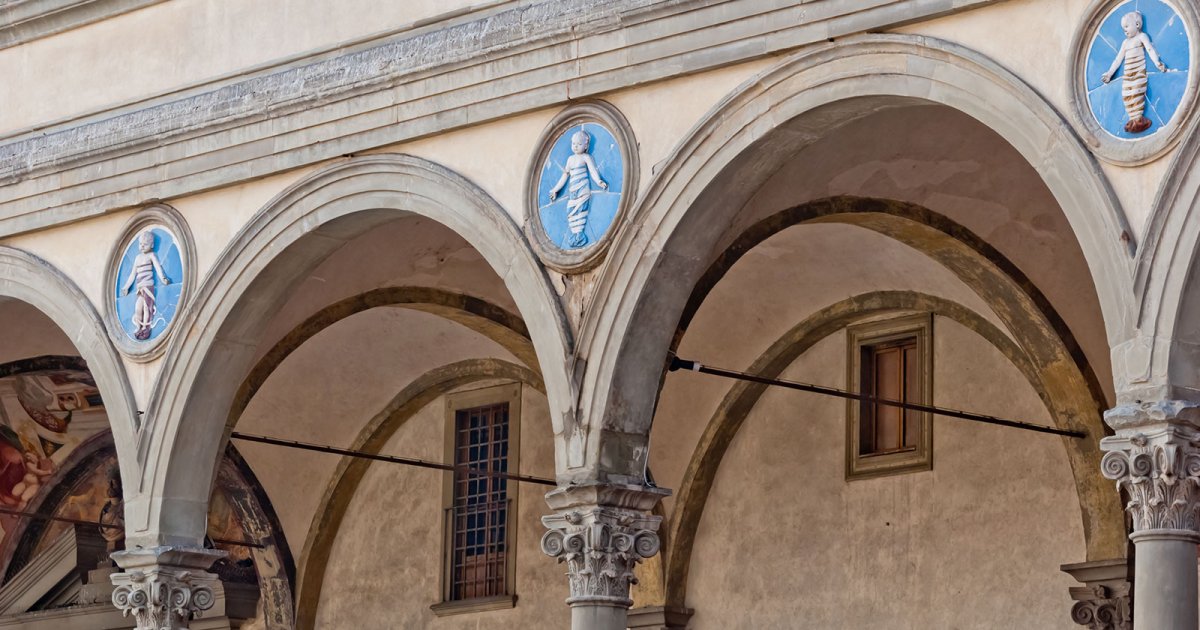PIAZZA ANNUNZIATA, Ospedale Degli Innocenti
 Language: English / USA
Language: English / USA
Now you're back in Piazza dell’Annunziata with its symmetrical design and porticoes closing the long sides. Needless to say, this square is the fruit of an urban project, perhaps one designed by Filippo Brunelleschi himself in the early 1400s.
The beginning of the construction of the Ospedale degli Innocenti also dates back to the same period. It was commissioned by the Arte della Seta, or the Silk Trade, which was one of the most powerful corporations of Florence in the early Renaissance, at the time when the square was occupied only by the old church of the Santissima Annunziata. It's possible that from the very beginning of the hospital's construction, Brunelleschi intended to transform the square into a unitary space with symmetrical porticoes. The project, however, was not implemented until the next century, when on the right side of the square both the Loggiato dei Servi was built, so called because it was the property of the Servite Order, and the portico in front of the basilica.
In Ospedale degli Innocenti, you'll see many details that represent its original role welcoming and guarding abandoned children, like the ceramic medallions depicting bundled-up infants which were made by Andrea della Robbia and decorate the spaces between the arches of the façade.
At one end of the portico you can see a window covered by a grate, which can be reached by climbing a few steps: this was the wheel, which is now walled, where mothers could leave their newborns without being seen, in the certainty that the hospital staff would care for the babies. The hospital's rich archives reveal that mothers often left letters and even things they could be recognized by, such as half-broken medals, in the hopes that they would help them find their children in the future. Some of these materials are now exhibited in the recently established museum, up, where you can peruse the hospital's rooms and admire remarkable works of art. I'd especially like to point out two splendid altar paintings from the late 1400s, one by Domenico Ghirlandaio and the other by Piero di Cosimo, and the originals of glazed terracotta tondi decorating the façade.
FUN FACT: even though the hospital no longer welcomes abandoned children, it has remained very active in the field of childcare, continuing a centuries-old tradition in Florence. Inside there are pre-schools, a kindergarten, some group homes, and even Unicef offices.
And with this we have finished our tour of Piazza dell’Annunziata in Florence. MyWoWo thanks you for staying with us, and will see you at the next Wonder of the World!



